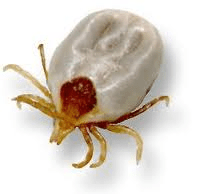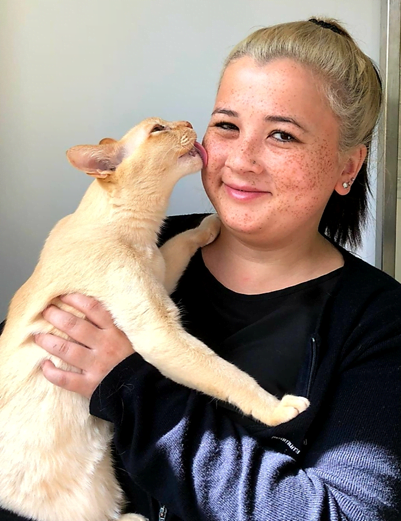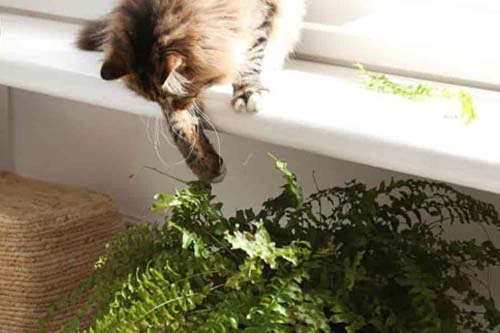Keeping you informed
Newsletter August 2022

Warning – Deadly Ticks About
 After long months of cold temperatures and lots of rain, we have started to see some quite pleasant weather leading into September. Because of this, our precious pets will be more exposed to the outdoors while on longer walks, holidays and in their own back garden.
After long months of cold temperatures and lots of rain, we have started to see some quite pleasant weather leading into September. Because of this, our precious pets will be more exposed to the outdoors while on longer walks, holidays and in their own back garden.
Remember to keep an eye out for paralysis ticks this spring and summer, which can be deadly within days of attachment, and learn about how to protect your pet from these dangerous parasites by reading Dr Gretta Howard’s article “Keeping your pet safe from deadly tick paralysis”.
Hotter weather will also bring out greater quantities of pollen and other allergens, and while it isn’t called hay fever in pets, our pooches can also be affected by the warming weather just like their owners! Have a read about long-acting Cytopoint injections for dogs, an innovative product which can relieve your dog’s itchy skin.
Are you affecting your dog’s behaviour? Katie, our Pet Behaviour Consultant, has written an informative article on “How your body language affects your dog’s behaviour” which is a real eye opener on the influence you have on your dog.

Our practice is thrilled to welcome our Nursing Manager – Stephanie, who is featured below with ‘Salty’, joins the team with over 10 years experience and a wealth of knowledge in the veterinary field, including previous roles at the RSPCA, SASH and private practice. We are delighted to have Steph join our team.
Keeping your Pet Safe from Deadly Tick Paralysis
Author: Dr. Gretta Howard – Senior Veterinarian

What is a paralysis tick?
The Australian paralysis tick, Ixodes holocyclus, is a small arthropod parasite unique to the eastern coast of Australia, extending from the Lakes Entrance in Victoria to tropical Queensland.
Ticks attach to the skin of animals to consume blood for food. The natural host includes possumsand bandicoots (immune to the tick toxin). In dogs and cats, the tick toxin is poisonous and can be fatal within 5 days of attachment.
Peak tick season extends from September to the end of February, although dogs and cats with tick toxicity are still seen during winter.
How does the paralysis tick make my pet sick?
Once attached, the tick injects a neurotoxin (nerve toxin) into your pet and causes signs of tick toxicity. Even with veterinary care, tick toxicity has a 5% mortality rate but the earlier your pet is treated the better the outcome.
Clinical signs of tick toxicity include:
- Vomiting or retching (mainly dogs)
- Change in the sound of your dog’s bark or your cat’s meow (vocal chord paralysis)
- Incoordinated back legs or wobbly gait progressing to paralysis of all limbs
- Difficulty breathing progressing to respiratory failure and death
Signs of tick toxicity usually occur within 3 days of tick attachment.
One tick can kill a pet.
Click on the link to learn more about keeping your pet safe from ticks.
How your Body Language Affects your Dog’s Behaviour!
Author: Katie Bedrossian – Pet Behaviour Consultant
Did you know that dogs are experts at reading the subtle cues in our body language?
They are much better skilled at this than understanding our verbal cues.
Excitable dogs become more excited when their humans use rapid body movements, while anxious dogs can become more anxious with direct eye contact, or if someone is leaning in and reaching towards the head, neck and shoulder area.
The way you position and move your body also greatly affects how your dog responds to you, as well as the progress of your training.
Here are 5 ways you can change your body language to improve your dog’s behaviour:
- Position your hands behind you. Unless you are using a treat to lure your dog into position (treat on nose to lead the dog), the best position for your hands when training is behind your back. Hands out in front can encourage food trained dogs to look at hands rather than faces, encourage jumpers to jump up for food and encourage some dogs to position themselves where your hand is rather than more central. It also reduces food dependency if the food or clicker (if using) is hidden behind your back.
- Stand up tall when giving the ‘Sit’ cue. It is very natural for people to lean their body towards their dog for interaction (and this is fine in this instance). However, if we are trying to get a dog to sit, leaning towards them may cause them to stay standing (or jump up). This is because the closer your face is to their level, the less they have to look up. Looking up is often what initiates their bottom to go down into a sitting position.
- Face your body in the direction you want your dog to go. Whether your dog is not wanting to walk with you or has grabbed a forbidden item at home, facing your body completely in the opposite direction to your dog can encourage them to head towards you. Better yet, jog away from them, wave a toy around and/or squeak a squeaky toy to let them know that following you is valuable. The reason this works is that facing away from your dog indicates that there is something interesting where you are, whereas facing towards your dog indicates that something is interesting where they are.
Click on the link to learn more about body language and dog’s behaviour.
Pet Of The Month: Patch Samson

Patch is one of Turramurra Veterinary Hospital’s all-time favourite golden oldies. She is a beautiful Labrador that has been visiting the practice for almost 10 years and has just turned 16 years old! Despite a few chronic health problems, Patch does her best to ‘bound’ into the clinic with the enthusiasm of a 6 month old puppy. Always friendly and showing off her ‘full body wag’, Patch’s 16th birthday is certainly one to celebrate. She has pushed past all odds and continues to thrive in old age, enjoying her life with her wonderful caring family.
Staff Profile: Danielle – Customer Care

You have a lot of past experience working at veterinary clinics in a reception role. What has driven you to work in the animal industry?
Since I was young I have always wanted to work with animals and ideally at a vet clinic. Because I had also worked in customer service for quite some time, it seemed like a natural step, and I really enjoy that side of things. Sharing pet stories with clients and growing a relationship with the pets and their owners really drives me to do my job well. It is always exciting coming to work and cuddling puppies all day!
What do you enjoy most about working at Turramurra Veterinary Hospital?
Coming from a large veterinary specialist hospital into this role, I enjoy the smaller environment and interacting more with clients and their pets on a personal level. We have a great team and all get along really well. We all share the same values and love our pets so much.
Tell us a little bit about your own dog.
I have a cheeky Shoodle (Shih-Tzu cross Poodle) called Mia. She is 2 years old and I got her when she was just 9 weeks old. She is the best little girl, and is very loving and sociable. She loves going for walks and exploring new places but also loves chilling at home on the lounge with me watching movies.
Feline Friends: Cat-friendly indoor plants
Author: Freya Britt-Lewis – Customer Care & Pet Health Care Writer
As the weather warms into spring, gardening and home decorating may become more of a welcoming prospect. With less mud and rain, and more fertile soils and sunlight, gardening will become an accessible and enjoyable hobby for many pet owners. Nurseries and florists will be full of beautiful shrubs and flowers with helpful staff waiting to assist you. As cat owners, you may be left wondering about whether the plants are safe around cats.
Is this plant safe for my cat?

Training your cat to feel relaxed and comfortable in their carrier will be beneficial for many reasons, such as decreasing anxiety and ensuring comfort while traveling.
It’s important to be aware of what plants you have in your home and garden to help protect your beloved cat from potential plant toxins. Sometimes cats get up to mischief and may even chew on plants in your home, or they may pick up pollen inadvertently then groom themselves, leading to ingestion of plant parts.
Lilies (Lilium and Hemerocallis spp.) are particularly toxic to cats and should never be kept in the same room as a cat due to the risk of acute kidney failure if ingested. The entire lily plant is toxic to cats including the stem, leaves, flowers, pollen and even the water from the vase that the flowers were kept in.
For this reason, it is paramount that all elements of your interior design are carefully selected to be cat-friendly.
What are some suitable options for cat-friendly plants?
In Australia we are blessed with a bountiful variety of plants to decorate your home from many lovely nurseries. The trick for cat owners is weeding out the nasties in order to create a cat-safe environment for your feline to frolic.
Below are are examples of cat-friendly plants to spruce up your interior décor:
Boston Fern

One of the most popular indoor plants, this is a versatile fern suitable for cats that can create an aesthetically pleasing indoor environment! For this fern to flourish it needs a cool location, and high humidity.
Echeveria Succulents

Echeveria succulents are a unique and hardy succulent genus that comes in all shapes and sizes. They are easy to care for, just ensure they get up to 6 hours of sunlight a day and leave them to grow in a breathable pot.
Here is an extensive list of toxic and non-toxic plants for pets.
And remember, like people, all cats are individuals. If you notice your cat is sick or unwell after contact or ingestion, book in an urgent veterinary consultation.
Click through to find more cat-friendly house plants.
Innovations: Relieve your dog’s itchy skin with Cytopoint
Author: Freya Britt-Lewis – Customer Care & Pet Health Care Writer

Have you noticed your dog itching, scratching, and licking at their skin for long periods?
Are they developing redness or rashes on their feet, legs, or belly?
Your dog could have something called Canine Atopic Dermatitis. It can be confronting to see your beloved pet scratching and licking at their own skin, often making it worse, and potentially even frustrating if they just won’t stop. Like all conditions, early intervention is best to stop more severe skin issues developing.
What is Canine Atopic Dermatitis?
Canine atopic dermatitis is a common allergic skin disease, affecting almost 10% of dogs worldwide. It can be triggered by a hypersensitivity or over-reaction to substances in the environment such as mould spores, house dust mite or plant pollens due to a defect in the skin barrier.
This ‘leaky’ skin barrier allows water loss through the skin and an increased penetration of irritants and potential allergens as well as an increased susceptibility to infection. Atopic dermatitis is a lot more common than food allergy.
Signs can vary with fluctuating severity, such as developing itchy, red, crusty and irritated skin, with the potential to lead to:
- Hair loss
- Skin infections
- Ear infections
Your dog could also experience behavioural changes, as they may lose interest in playing due to excessive itching and discomfort. While it is a lifelong condition, there are steps we can take to manage your pooch’s condition, such as a visit to the veterinarian for a Cytopoint injection.
What is Cytopoint?
Cytopoint is an effective, long-term anti-itch injection which has a fast-acting effect on your dog’s itchy skin and so can improve their quality of life. Based on the latest medical developments, it is a biological therapy (rather than a drug) that targets itch as its source to help relieve signs of atopic dermatitis.
Cytopoint contains antibodies similar to your dog’s natural antibodies, that are specifically designed to target and neutralise the proteins that send itch signals to your dogs brain. When the itch is controlled, the damaged skin can be allowed to heal.
How often will my dog need Cytopoint?
The short answer is that it depends on your dog. Some dogs may need Cytopoint frequently throughout the year (e.g. 4-6 weekly), whereas others may only need it once in a while when their itching flares up (e.g. during allergy season). Your veterinarian will help you create a personalised schedule for your dog, in order for the best clinical outcome to be achieved.
If you would like to book in a veterinary consultation to discuss Cytopoint for your dog, be sure to give our Customer Care Team a call on 9988-0198 to book an appointment, so we can get your furry friend more comfortable as soon as possible.
Ask the Vet!
Author: Dr Matthew Burke – Senior Veterinarian
1. My dog has been coughing for the past week, but seems well otherwise. What could this mean?
There can be many causes of coughing in dogs. By far the most common however is an infectious condition which affects the upper airways stimulating a harsh dry cough.
Commonly called ‘kennel cough’ this infection is caused by either a bacteria or a virus – sometimes both. The name kennel cough is misleading as your dog may pick it up from casual contact with another dog at the park or through a fence so we tend to call it Infectious Tracheobronchitis, or more simply Canine Cough.
Even dogs vaccinated against this disease can be affected as the vaccines are not 100% protective, however, as with human vaccines, vaccinated dogs tend to be affected less severely. Veterinary treatment can reduce the signs of the cough even further until the infection is eliminated.
Other causes of coughing could include underlying heart or lung conditions although these generally develop over a longer period of time.
If your dog is coughing, the first step in investigation begins with a physical examination during a consultation with one of our veterinary team members.
2. I missed my cat’s annual vaccination last year due to lockdown. What should I do?
We vaccinate cats every year against three main diseases. Two are respiratory viruses called Feline Herpesvirus and Feline Calicivirus (both commonly known as Cat Flu) and the third is a gastrointestinal virus called Feline Panleukopaenia Virus, commonly known as Feline Enteritis.
As we have all been affected by the disruptions with COVID-19 over the last two years, visits to the vet for yearly checkups and boosters have sometimes been overlooked due to all the lockdowns and isolation orders.
If you are not sure how long it has been since your feline friend’s last vaccination, please contact us by phone or email and our friendly Customer Care Team will be able to quickly check for you.
Never fear if you have missed a yearly visit! The sooner you get your cat booked in for a booster, the sooner they can be protected once more.
3. Should I bring my dog in for a consultation if his breath is starting to smell?
Halitosis (bad breath) is a common problem in dogs. If it is transient it could be related to something your dog has eaten, whether it was meant to be part of their diet or not. Some things we find repulsive, your dog will find delicious!
Usually, however, if your dog’s breath is steadily worsening over time, the teeth and gums will be the problem as the smell is directly related to bacteria and infection. Tartar builds up quickly on teeth and can harbour many bacteria which not only leads to bad breath, but also causes inflammation, pain, gum disease and eventually tooth loss. Severe dental disease can even contribute to poor health.
We check the teeth at your dog’s yearly vaccination and health check, but you don’t need to wait until then if you are worried. Routine dental care is important for our pets as well as us and a visit to have your dog’s teeth examined will ensure the correct veterinary advice is given and a plan put in place to ensure your dog’s teeth and gums remain healthy.
We hope you have enjoyed our newsletter and would love to hear from you!
Do you have a question for our Ask the Vet section? If you do, please email your question to info@turramurravet.com.au and remember to put Ask the Vet in the subject line.
We are always happy to receive feedback from our clients, so feel free to send an email to manager@turramurravet.com.au as we always strive to improve our service.
Thank you! Warm Regards, your locally family-owned and independent Turramurra Veterinary Hospital team.

Dr James and Dr Gretta with Nurse Chloe in and amongst the community attending the Pymble Turramurra Preschool fete, working alongside the amazing kindy farm!

